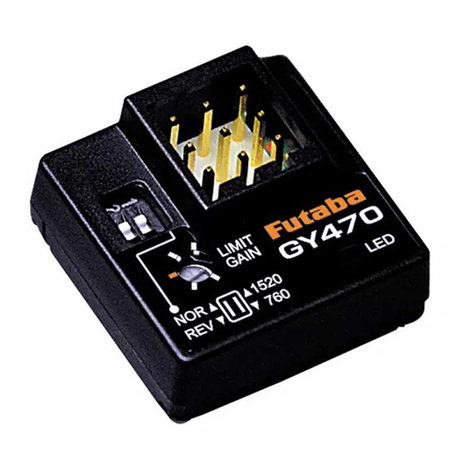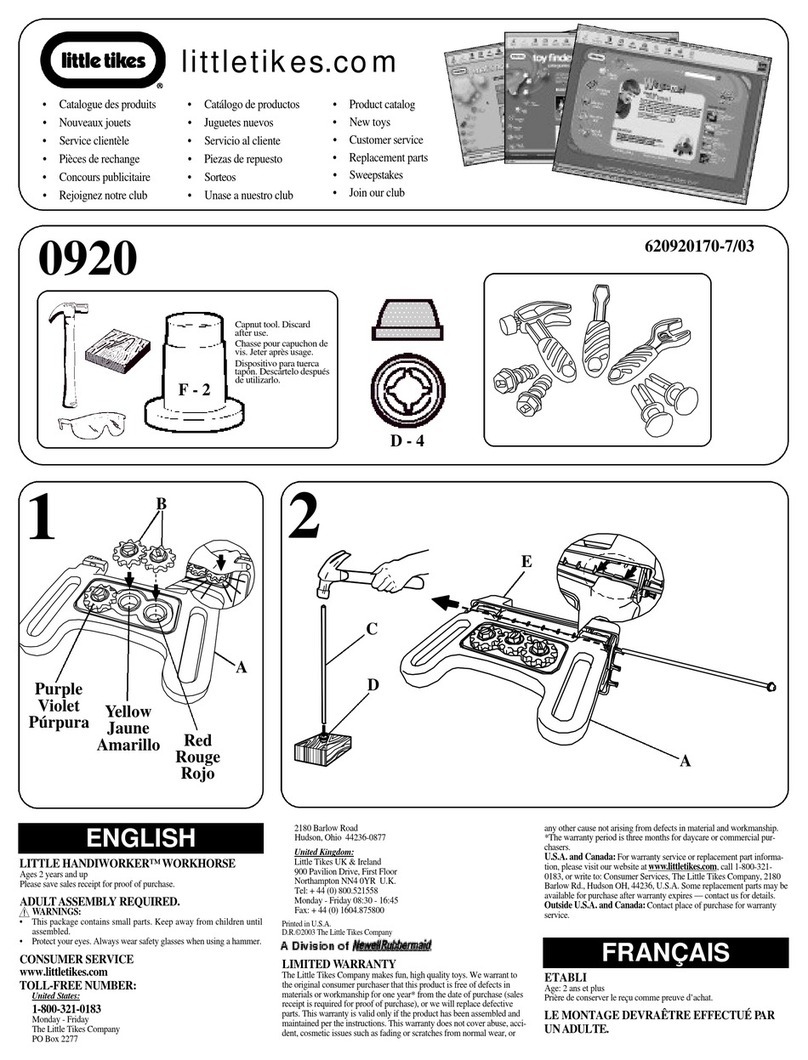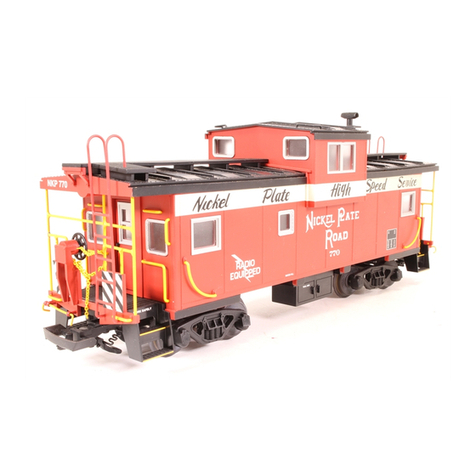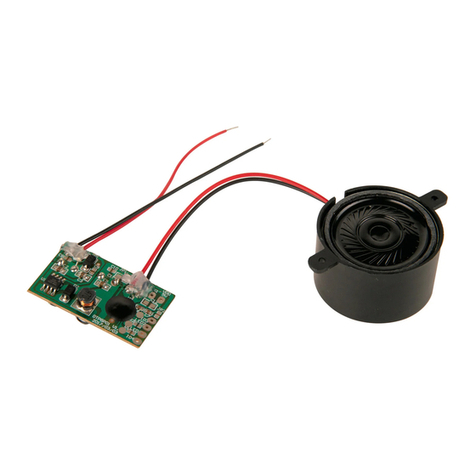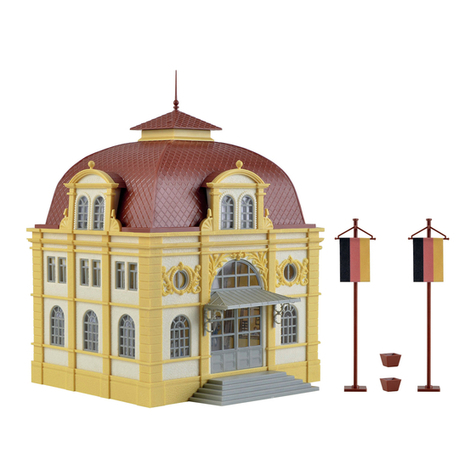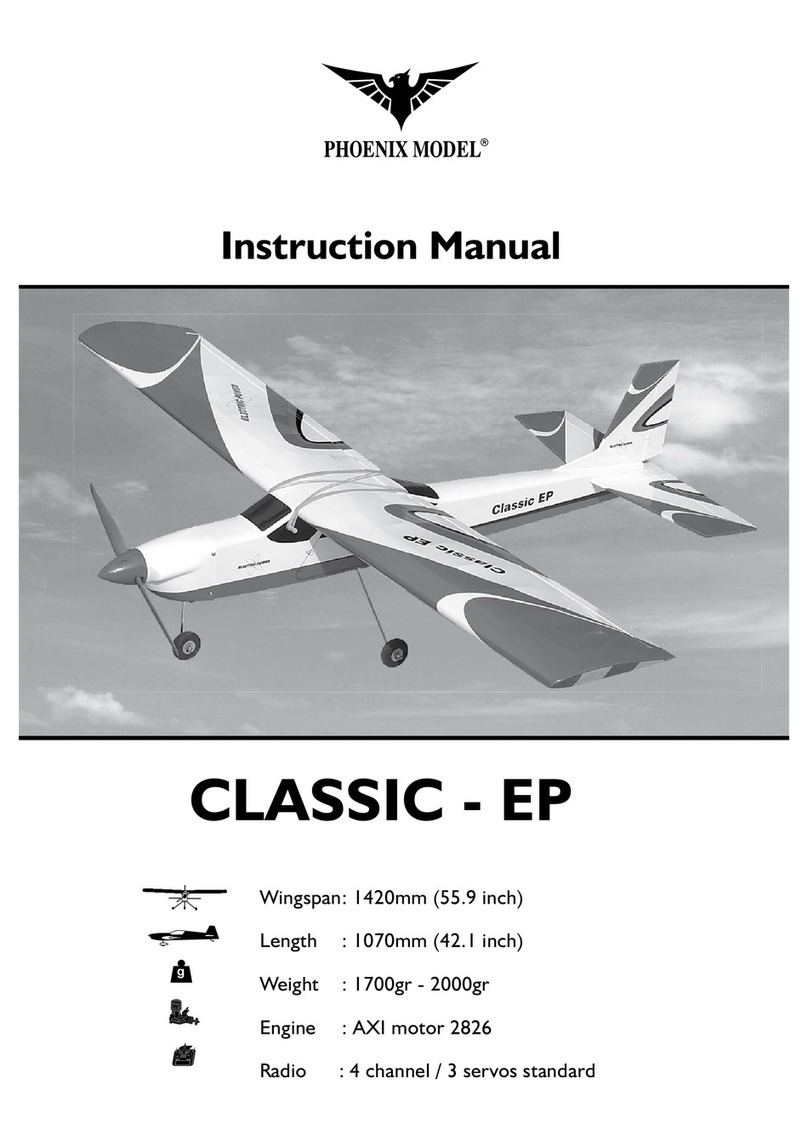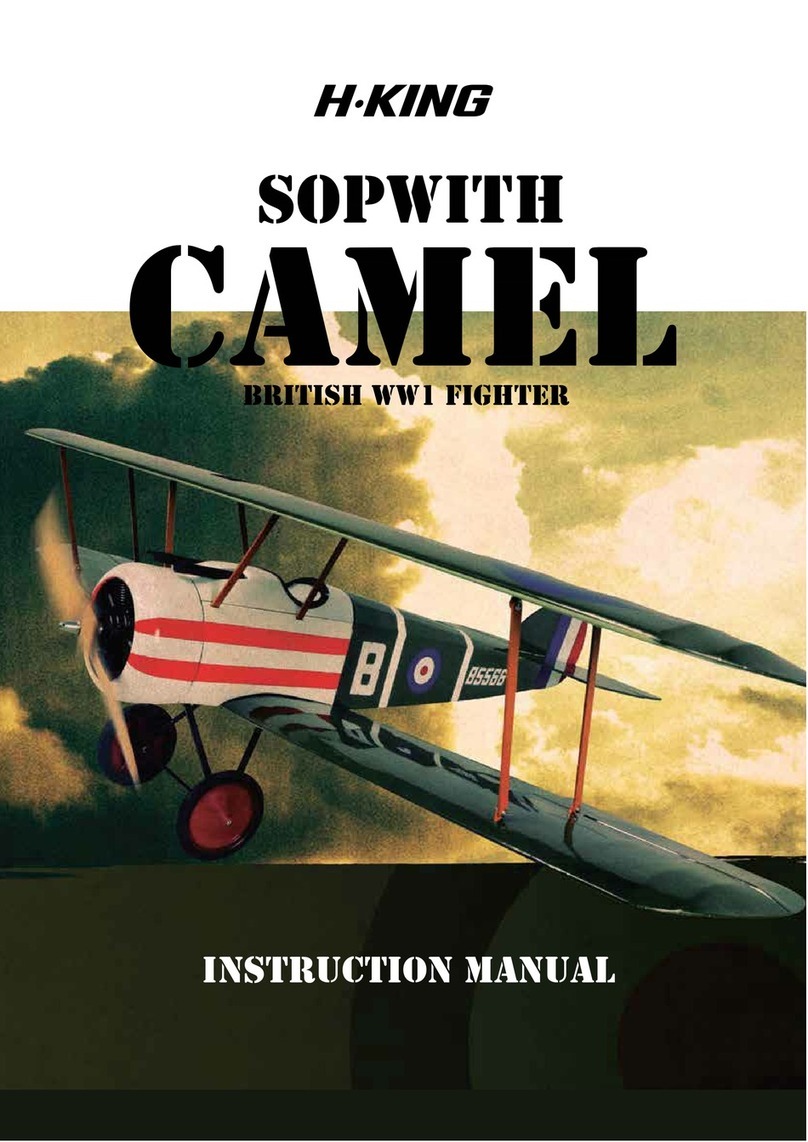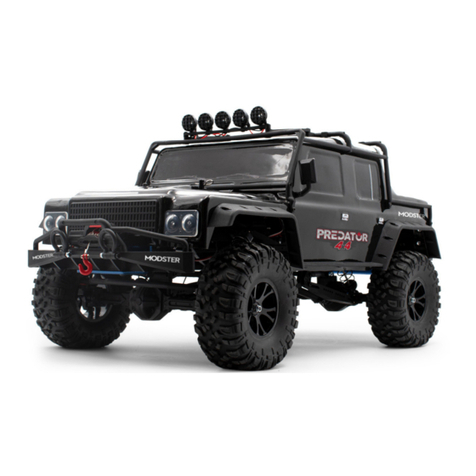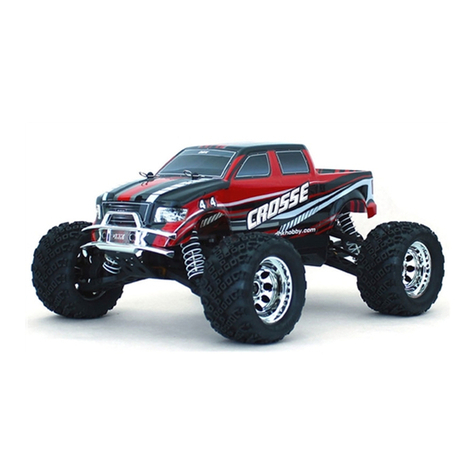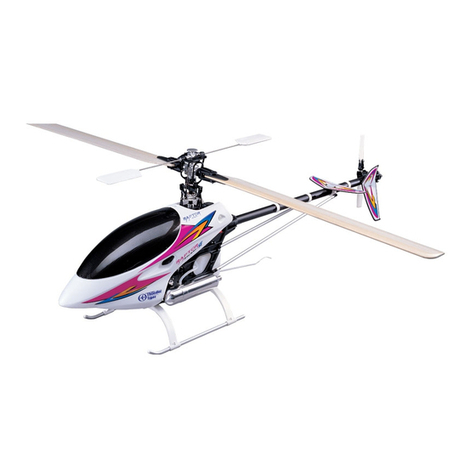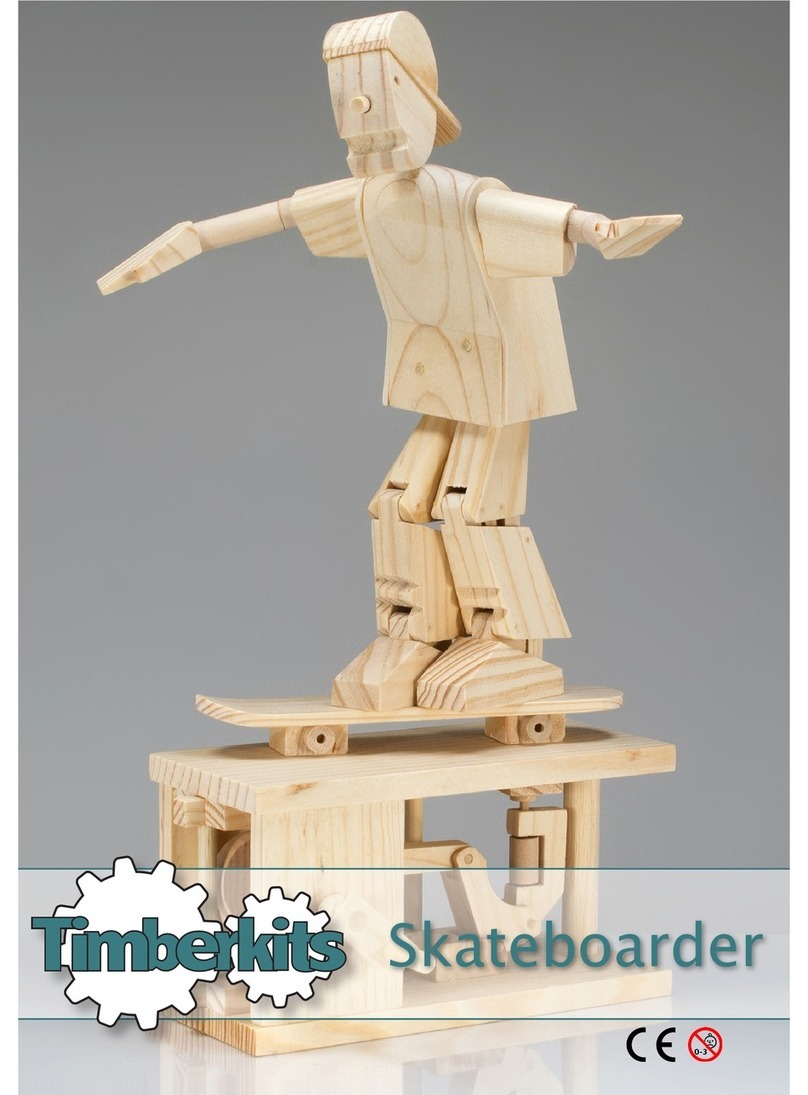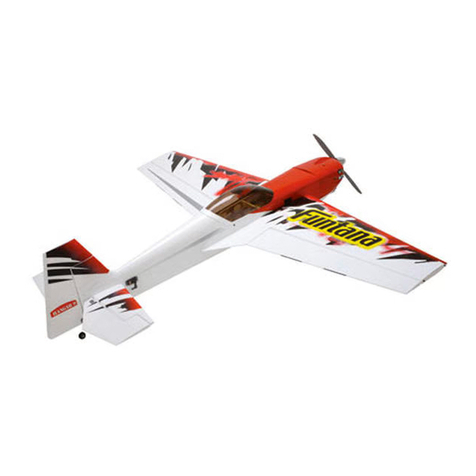
7
13. Install the battery and receiver.
To prevent ejecting the battery in
flight, either put an extra security
strap around the canopy, or lock the
battery in place with glue or Velcro.
14. A good starting-point for the CG
is at the end of the center-rib, as
shown to the right. Advanced flyers
may want the CG 3- mm behind
this point. Add weights to the nose
or tail to balance.
Radio Setup
Small adjustments on your transmitter can significantly improve the handling of
your Zulu. Here are some recommendations to get started with:
Exponential, or Expo” makes small stick inputs less sensitive than large inputs.
The Zulu has large control surfaces that make it easy to over-control the aircraft.
0% expo for pitch and roll is a good starting-point.
Dual rates, will swap control deflections from full throw and some reduced travel
setting. On the Zulu, it works nicely to have a “regular flying mode”, where pitch
inputs are limited to ±1 °, and an unlimited setting for deep-stalls and aerobatic
maneuvers.
Aileron Differential is typically used on conventional aircraft to make the "up"
moving aileron move more than the "down" moving aileron. The Zulu rolls best if
the “up” and “down” moving elevons move about the same amount. You can
use the differential setting to tune this, and it typically requires a negative
differential value. If this option isn’t available on your transmitter, you can create
this effect mechanically:
1. Remove your servo arms and rotate them so they are angled back about 15°.
2. Reattach the servo arms and adjust the clevises (shorter in the rear, longer in the
front) to bring the control surfaces back to the trim settings.
Trimming
With the controls set to neutral, and rates set low, give the Zulu a toss on a lawn.
After trimming pitch and roll with your transmitter, adjust the drooperons back to
neutral (aligned with the fixed wing-tip) by twisting the clevises or bending the
pushrods.
